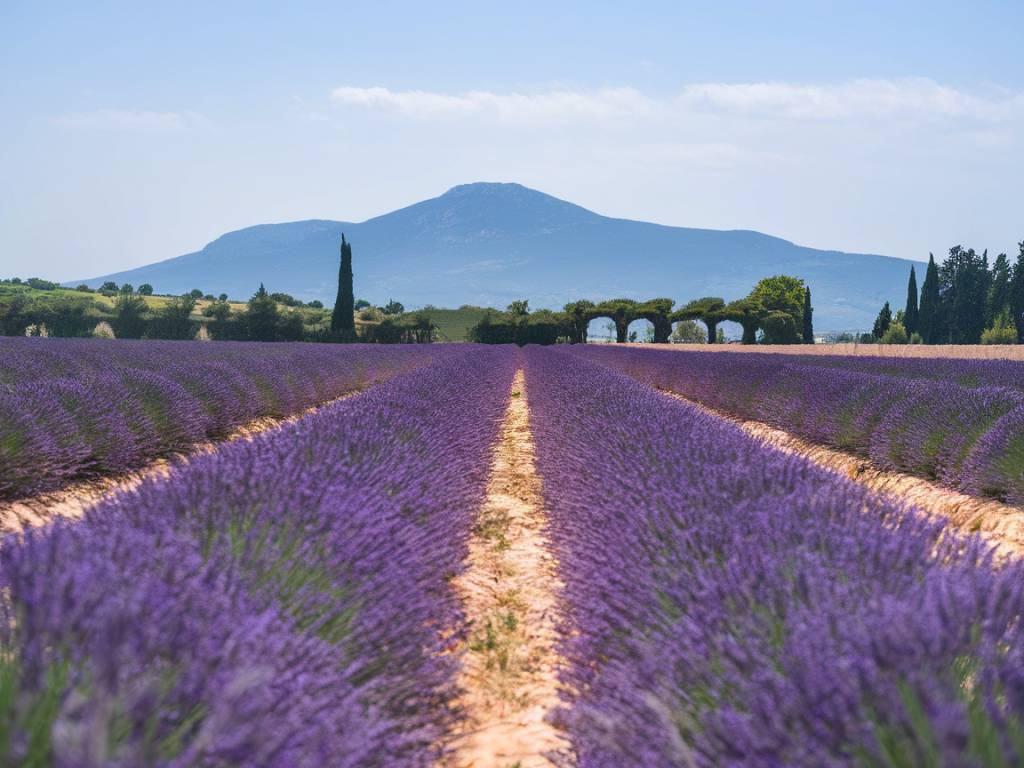If there is one image that encapsulates the quintessential beauty and romance of southern France, it is undoubtedly the endless stretches of vibrant purple lavender fields. Nestled in the heart of Provence, these iconic landscapes offer not only a feast for the eyes but a journey for the senses, blending the soft fragrance of lavender with the gentle caress of the Mediterranean breeze. Join me as I explore when and where to go to fully immerse yourself in the captivating lavender fields of Provence.
When to Visit the Lavender Fields
The timing of your visit to Provence is crucial if you wish to experience the lavender fields in their full bloom. Clockwork is dictated by nature here, and while there are no guarantees, understanding the general timeline can enhance your travel plans. Lavender season in Provence typically runs from late June to early August, with some fluctuations depending on the local climate each year.
For those seeking the optimal experience, aim for the first two weeks of July, a period often considered peak season for blooming fields. By this time, the lavender will be in full bloom, painting the landscape in brilliant hues of purple. This period also coincides with a host of regional lavender festivals celebrating this significant agricultural bounty.
Late July to early August marks the beginning of the harvest season. The precise timing depends on the weather patterns of the year, including the level of rainfall and sunshine. This is when the air is filled with an even more intense fragrance, and the fields are bustling with activity. It’s still an excellent time to visit, especially for photography aficionados who can capture the essence of Provence during less crowded times.
Where to Find the Best Lavender Fields
Provence, being a large region, offers numerous captivating spots where lavender blooms in abundance. Here are some of the most revered locations:
- Plateau de Valensole: Perhaps the most famous and extensive area for lavender, Valensole offers rolling fields that stretch as far as the eye can see. The plateau is dotted with quaint villages and charming shops selling everything lavender-related. Explore the area by car, bike, or on foot for a complete sensory immersion.
- Abbaye de Sénanque: Near the picturesque town of Gordes, this 12th-century abbey is famously captured in photographs framed by vibrant lavender fields. This working monastery offers a spiritual backdrop to the stunning natural beauty, making it a unique spot for both contemplation and admiration of Provence’s lavender.
- The Luberon Valley: Known for its landscapes immortalized in Peter Mayle’s “A Year in Provence,” the Luberon offers a mosaic of lavender fields peppered around enchanting hilltop villages. Towns like Roussillon and Bonnieux provide idyllic settings to explore, complemented by local markets brimming with lavender products.
- Sault: Perched on a high plateau, Sault offers cooler air and slightly later blooming times, often extending the lavender viewing season into mid-August. The local Lavender Festival (Fête de la Lavande) in August is an immersive experience celebrating all things lavender.
- Drôme Provençale: This less crowded area offers a blend of vineyards, olive groves, and lavender fields. It’s perfect for travelers seeking a tranquil escape surrounded by panoramic vistas and charming Provençal villages like Nyons and Grignan.
Experiencing Provençal Lavender Culture
Visiting during lavender season is not just about observing these stunning fields; it’s an opportunity to dive into the rich culture that surrounds them. Here are a few ways to fully experience Provençal lavender culture:
- Lavender Festivals: Festivals such as those in Valensole and Sault celebrate the harvest with local food, music, and traditional dancing. These events provide an engaging way to learn about the history and significance of lavender in the region.
- Guided Tours and Workshops: Many farms offer tours and workshops that provide insight into the cultivation and distillation of lavender. These educational experiences often include the opportunity to make your own lavender sachets or essential oils, serving as perfect mementos of your journey.
- Culinary Delights: Savor the unique flavors of lavender in Provençal cuisine. From lavender-infused honey to delicate lavender sorbets, the aromatic herb adds a floral touch to local dishes and desserts. Wine lovers should also try local rosés and reds, which are often accompanied by a hint of lavender in summertime events.
- Photography and Art: Artists and photographers are drawn to the field’s vivid colors and light, creating inspiring works that capture Provence’s essence. Whether you’re snapping your own pictures or purchasing art, this region offers endless creative opportunities.
Practical Tips for Your Visit
A visit to the lavender fields of Provence is best enjoyed with a bit of preparation. Here are some practical tips to ensure a delightful trip:
- Transport: Renting a car is highly recommended for exploring the remote countryside where most lavender fields are located. This freedom allows you to meander through scenic routes at your leisure and discover hidden gems along the way.
- Timing: Plan your visits to the fields early in the morning or late in the afternoon to experience the best lighting and cooler temperatures. This strategy also helps you avoid the larger tourist crowds.
- Weather: Provence can be incredibly sunny and hot during the summer months. Don’t forget to bring sunblock, a hat, and plenty of water, and consider wearing light, breathable clothing.
- Respect the Fields: While the temptation to wander into the fields for that perfect selfie can be strong, it’s essential to be respectful of the farmers’ livelihoods. Stay on designated paths and avoid trampling on the crops.
Each summer, the lavender fields transform Provence into a dreamlike landscape, and the experience offers more than just a stunning visual display. With its captivating fragrance, rich cultural significance, and enchanting rural backdrop, a trip to the lavender fields of Provence is a journey that stays with you long after you leave. Just make sure you have ample memory card space—you’re going to need it!




